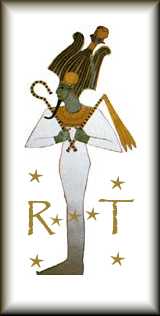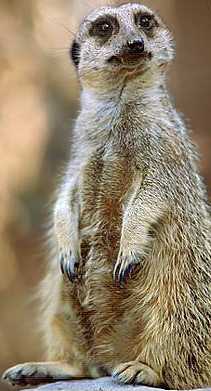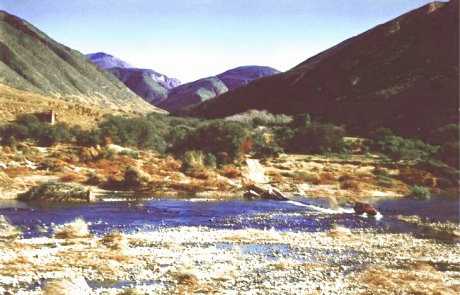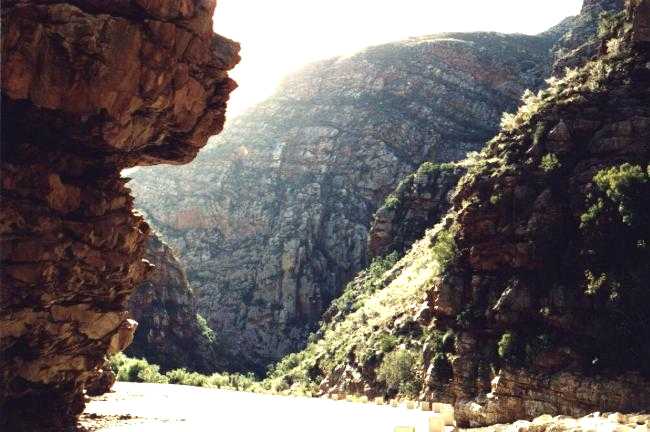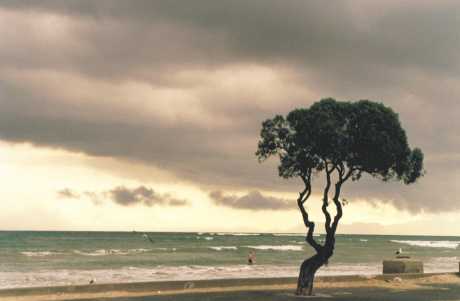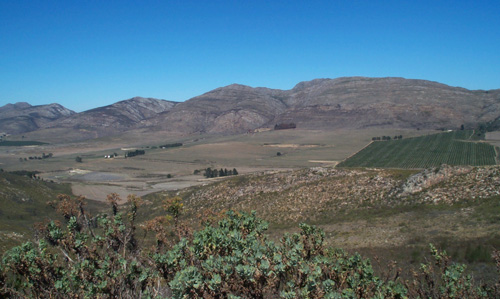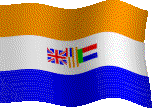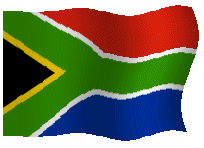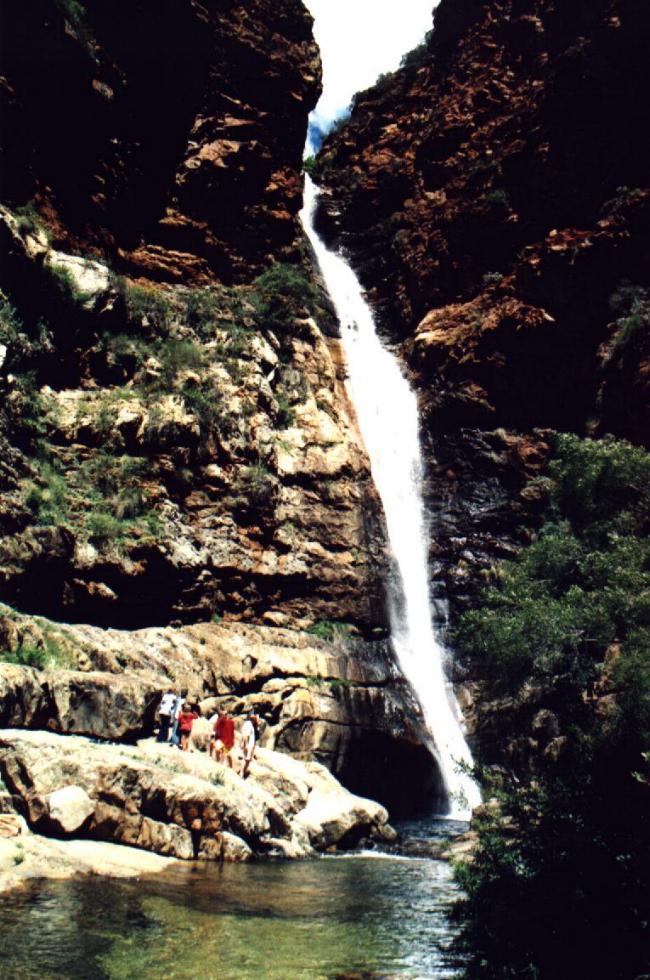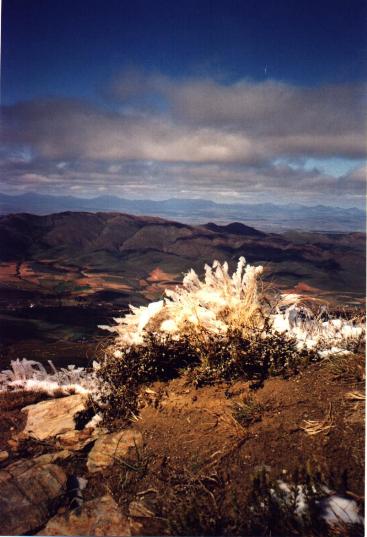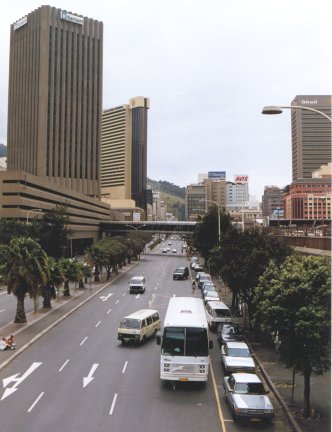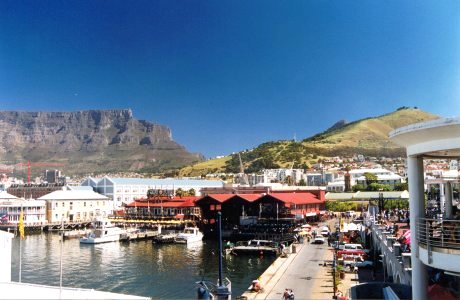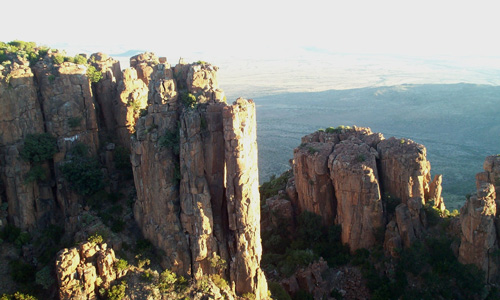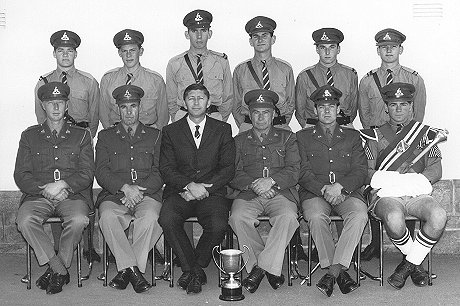
A CHILDHOOD IN THE OLD SOUTH AFRICA
This is not so much the story of one man's childhood and youth as it is the story of a whole generation. Much of the way we grew up, and most of the pastimes with which we amused ourselves in the days before television and TV games are completely strange to the generations which followed us. So this is more a celebration of those things and some of the places from my childhood and youth than an autobiography. I hope that whoever reads this and remembers these things and places fondly will enjoy the memories with me ...
*
Click on the thumbnails
to view the full pictures
Click on the SA flags at the top of the page for the lyrics and music
of the anthems
Click
HERE
for a map of South Africa
Clicking on place names will bring up a map of each area
*
PLACES
Although
I was born in the Pilgrim's Rest District in the old Transvaal (my parents
running a banana plantation between Sabie and
Graskop), I spent most
of my childhood in the Cape Province. We moved frequently, because my
father worked for the Cape Provincial Roads Department at the time, and so
I got to live in small villages like Jansenville, Steytlerville, Alicedale,
Petrusville
and Douglas. Life in these villages was ideal for a
young boy; we had the run of the place, and a few minutes' walk took one
into the veld and virtually out of sight of the town. So we spent most of
our afternoons and school holidays playing out in the open, barefoot and
adventurous.
We also lived in larger towns and cities, spending some time in East
London on the east coast and in Cape Town itself. But most of my younger
days were spent in towns like Oudtshoorn, Graaff-Reinet, Klawer, Vredendal,
Tulbagh, Willowmore
and Villiersdorp, where I graduated from the De Villiers
Graaff High School in 1969. Some of my holidays were spent in Worcester
and Still Bay, but for many years it was tradition that we would go
camping with my maternal grandmother and her family at Palmiet, near
Kleinmond on the Cape south coast, less than two hours' drive from Cape
Town.
Later I worked in Cape Town and Moorreesburg after I had served in the SA
Defence Force, first as a National Serviceman in the Army Gymnasium in Heidelberg, Transvaal, and then in the Permanent Force at the Youngsfield
Anti-Aircraft Artillery base in
Cape Town and the Infantry School in Oudtshoorn. I studied at Stellenbosch
University from 1973 to 1976, and then joined the teaching staff of the
Paul Roos Gymnasium, one of the top boys' schools in the country. Here I
taught from 1976 to 2000. At this time I lived in the lovely town of
Somerset West, 20km or so from Stellenbosch.
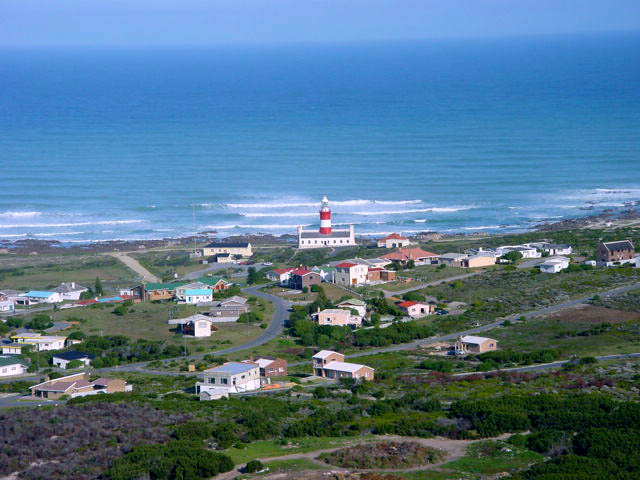
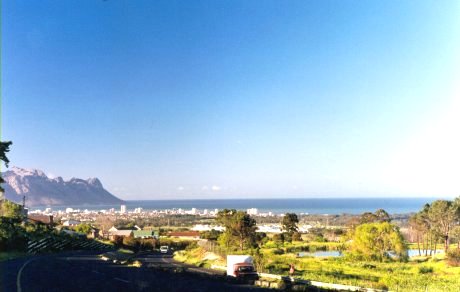
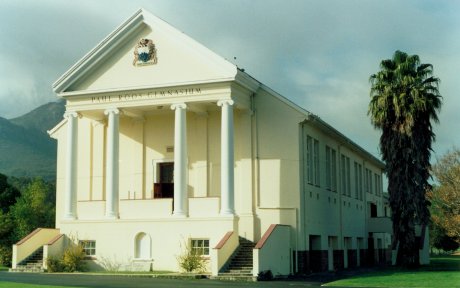
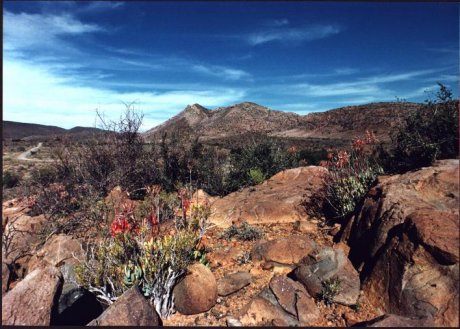
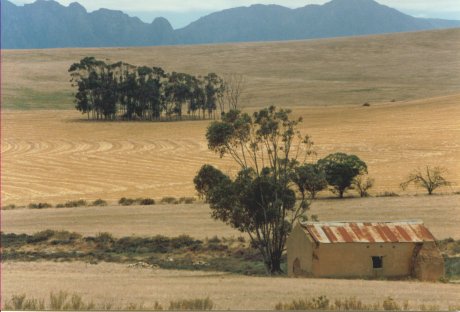
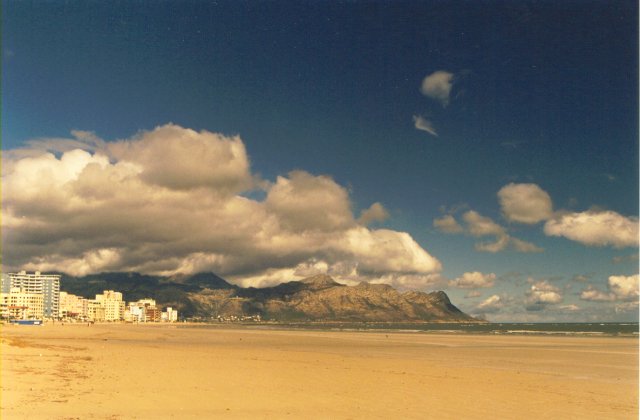
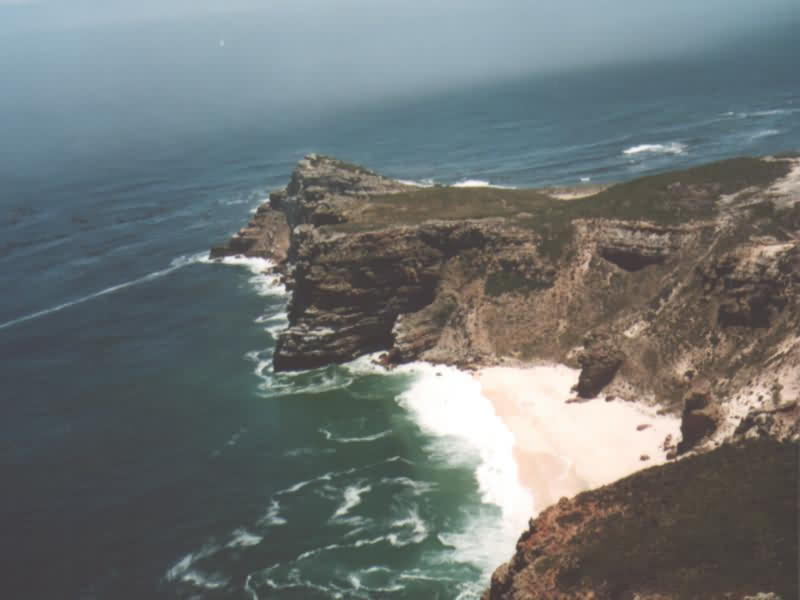
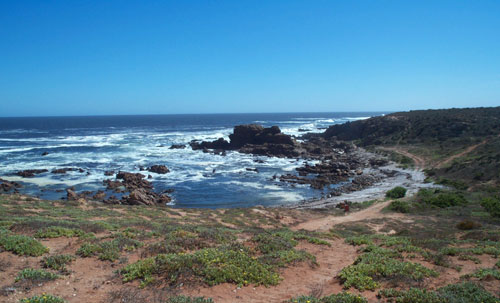
PASTIMES

As
children we had to amuse ourselves either by playing traditional games or
by inventing new ones. Most of our afternoons, week-ends and holidays were
spent out of doors. We grew up barefooted and unconcerned about sunburn,
thorns in the feet, stubbed toes and the myriad of scratches, bruises and
sometimes more serious injuries which came as part of our games. Some of
these were quite dangerous and would no doubt fill modern parents with
horror (I am sure, had they known it at the time, our parents would also
have frowned on some of our more risky pastimes!).
An all-time favourite was kleilat,
which involved
finding a supple willow twig about a metre long and some really sticky
clay. The clay was shaped into a ball about the size of a fist and moulded
onto the thin end of the twig. Then, using an action similar to a surf
angler's casting action, the twig was used to release the ball of clay,
which thus became a formidable projectile. With some practice (and we were
soon very adept at it!) such a clay missile could be hurled a good fifty
metres with bruising accuracy. Kleilat fights normally involved two
teams, usually arrayed on opposite sides of the river, dam or waterhole
where the clay was to be found. The result was great fun and a fair number
of bruises and black eyes!
When there was no clay to be had, we sometimes indulged in clod
battles. These again
required two sides engaged in furious battles, the projectiles being hard,
dry clods of earth. Sometimes stones were surreptitiously substituted, and
then the opposing party would follow suit. The standing rule, though, was
that no "bullet" was allowed to be larger than our fists. These
battles were usually fought between the "Boers" and the "Rooinekke
or Kakies" (as the British troops were commonly known during the
Anglo-Boer War of 1899-1902). Who was who was always determined by some
sort of toss, as no-one wanted to be the British!
We also spent a lot of time building and sliding down what we knew as foofie
slides. These were
constructed by attaching a thick, strong steel wire as high up a tree
(usually eucalyptus) as we could, the other end of the wire being anchored
in the ground some 30 to 50 metres away. Running freely on the wire was a
short length of steel piping. Going down the slide entailed climbing into
the tree, grasping hold of the pipe and sliding down the wire -- and have
a safe landing, hopefully! Broken arms were not an uncommon result of this
activity, and sometimes the pipe became hot enough to leave the odd
blister on the palm.
A game which was frequently banned by school principals was kennetjie.
This was played with a thin stick about a metre long which served as a
"bat" and a shorter, thicker stick, usually around 15 cm long,
which was the "ball", the kennetjie. A very intricate
game, with many rules, it was also highly dangerous, as the
"fielders" had to try and catch the kennetjie once it had
been hit into the air.
A groove is cut in the ground, and the kennetjie
placed across it.
Any
number of people can play. The first, using the long stick, flicks the kennetjie
into the air and then hits it as far as he can and one of the other
players throws it back, trying to get as close
to the
groove as possible. The first player is allowed to hit it away
before
it comes to rest, but if it stops, he then measures with his hitting stick
how many lengths
it is from the hole. The closer it is, the more difficult will
be his next hit. I remember a three (three stick lengths)
being a "tip and a zip". This involved lightly tipping the
little stick with the bigger into a spin and then
trying
to hit the moving kennetjie. If you missed you were out. You were
also out if on any return throw the kennetjie
landed closer than a stick length to the groove. It was
then someone else's turn. There were other types of
strike (besides the tip and zip). Another involved balancing it on your
cheek and then letting it slide off when you had
to strike before it hit the ground. A third came off the
elbow
and so on. I still have a small lump on my
forehead from a badly judged attempt at
such a catch!
Other, less dangerous favourite pastimes were playing with Dinky,
Corgi or Matchbox vehicles, playing marbles or tops, or the usual cowboys
and crooks/Indians or cops and robbers, played with toy revolvers or
pistols for which we had to save quite a few weeks' pocket money. Not very
politically correct by modern standards! but not one of the boys with whom
I grew up turned into a mass murderer, armed robber or killer! Building
model aeroplanes, ships or cars (at that time mostly Airfix) was a pastime
for the evenings or rainy days, or those times when our parents had got
wind of what we had been up to and "gated" (grounded) us!
In those days boys also formed gangs, but these were actually secret
clubs, with their own rules, hideouts and badges. Often our varied forms
of battles were between rival "gangs", although more usually the
gangs were so secret that their very existence was not supposed to be
known by any but members. Such secret clubs had swashbuckling names like
"The Eagles", "Pirates" or "Knights of the Veld".
There was even an Afrikaans youth magazine called "Patrys" which
served as a forum for discussions, the exchange of ideas and stories about
gangs and which also contained plans for making or building things like
crossbows, canoes or any of the multitude of other objects we used to play
with.
Building our hideouts was a serious
undertaking, as it was to be dry in the rain, well hidden from passers-by,
comfortable and large enough to seat all the members.
As I recall more, and as I get more feedback from you (which I hope will
happen!) I will add to these activities with which we passed our free time
in the 50's and early 60's. Please do not hesitate to e-mail me, should
you have information you think I could add here.
